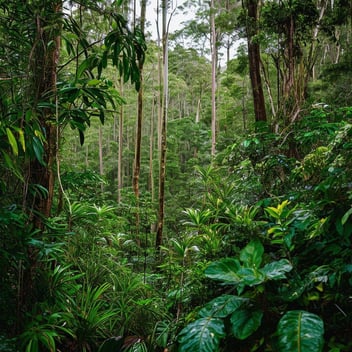Bush Medicine: Ancient Remedies from Local Plants
Introduction
For millennia, Indigenous Australians have harnessed the healing properties of native flora, developing a profound pharmacopeia rooted in deep ecological knowledge and cultural practices. This tradition, known as bush medicine, embodies a holistic approach to health, intertwining physical remedies with spiritual well-being. In this exploration, we delve into the rich tapestry of ancient remedies derived from local plants, shedding light on their traditional uses and enduring significance.
Historical Context of Bush Medicine
Origins and Cultural Significance
Bush medicine is an integral facet of Indigenous Australian culture, reflecting a symbiotic relationship with the land. Traditional healers, often referred to as "medicine men" or "ngangkari" among the Aṉangu people, possess specialized knowledge passed down through generations. These healers employ a blend of physical treatments and spiritual interventions, addressing ailments within a holistic framework that encompasses the body, mind, and community.
Transmission of Knowledge
The dissemination of medicinal plant knowledge occurs orally, through storytelling, ceremonies, and apprenticeships. This method ensures the preservation of nuanced understandings of plant properties, preparation techniques, and the contexts in which remedies are applied. Such knowledge is safeguarded within the community, reflecting respect for both the plants and the cultural heritage they embody.
Commonly Used Indigenous Medicinal Plants
Eucalyptus Species
Eucalyptus, commonly known as gum trees, are renowned for their antiseptic and decongestant properties. Indigenous Australians have traditionally utilized eucalyptus leaves to treat fevers, colds, and body pains. The leaves are infused to create medicinal teas or inhaled as steam to alleviate respiratory conditions.
Tea Tree (Melaleuca alternifolia)
The leaves of the tea tree have been employed for their potent antiseptic qualities. Crushed leaves are applied directly to wounds or brewed into teas to address throat ailments. The oil extracted from tea tree leaves is widely recognized today for its antimicrobial efficacy.
Old Man Weed (Centipeda cunninghamii)
Known for its anti-inflammatory and antimicrobial properties, old man weed has been used to treat wounds, infections, and skin conditions. The plant is often prepared as a poultice or infused in water for topical applications.
Quinine Bush (Alstonia constricta)
Also referred to as bitterbark, this plant has been traditionally used to alleviate fevers and digestive issues. The bark contains alkaloids with febrifugal and tonic properties, making it a valuable remedy for various ailments.
Preparation and Application Methods
Infusions and Decoctions
Leaves, bark, or roots are soaked or boiled in water to extract medicinal compounds, creating teas or washes for internal or external use.
Poultices and Compresses
Plant materials are crushed and applied directly to the skin, often wrapped with bark or cloth, to treat wounds, sores, or inflammations.
Inhalation
Aromatic leaves are heated, and the vapors inhaled to relieve respiratory conditions or to induce relaxation.
Integration with Modern Medicine
Complementary Practices
In contemporary healthcare settings, there is growing recognition of the value of integrating traditional bush medicine with modern medical practices. This approach fosters culturally sensitive care and acknowledges the efficacy of certain traditional remedies.
Research and Validation
Scientific studies are increasingly exploring the pharmacological potential of medicinal plants used in bush medicine. For instance, research into the antimicrobial properties of tea tree oil has substantiated its traditional use as an antiseptic.
Preservation of Traditional Knowledge
Challenges
The erosion of traditional knowledge due to cultural disruption and environmental changes poses a significant threat to the continuity of bush medicine practices.
Initiatives for Safeguarding
Efforts are underway to document and revitalize traditional medicinal knowledge. Collaborations between Indigenous communities and researchers aim to preserve this heritage while ensuring respect for cultural intellectual property.
Conclusion
Bush medicine represents a profound legacy of Indigenous Australians, encapsulating a deep understanding of the natural world and its healing potentials. The continued appreciation and integration of these ancient remedies enrich our collective medical knowledge and underscore the importance of preserving cultural traditions.




